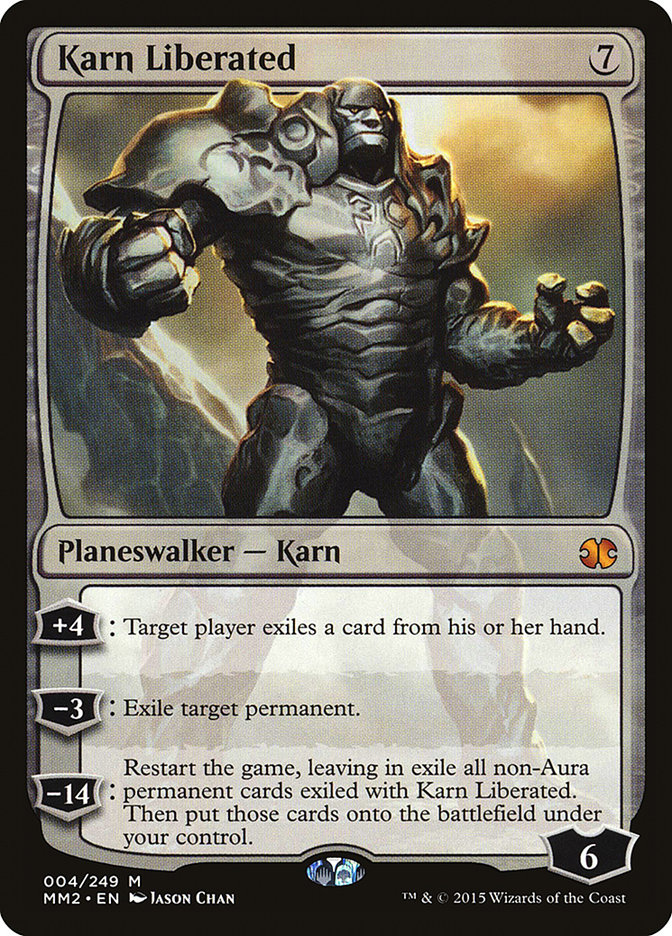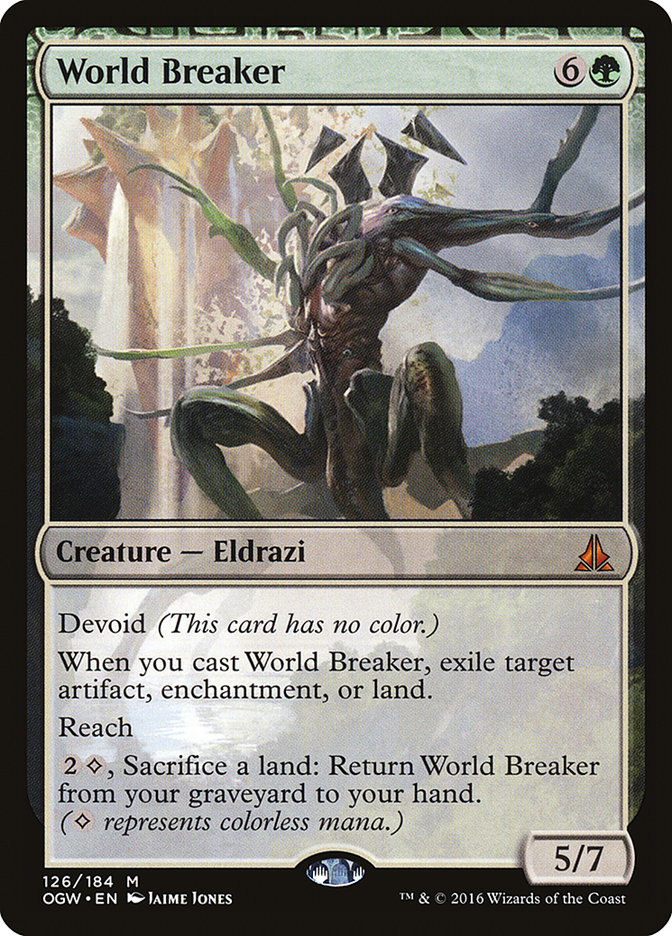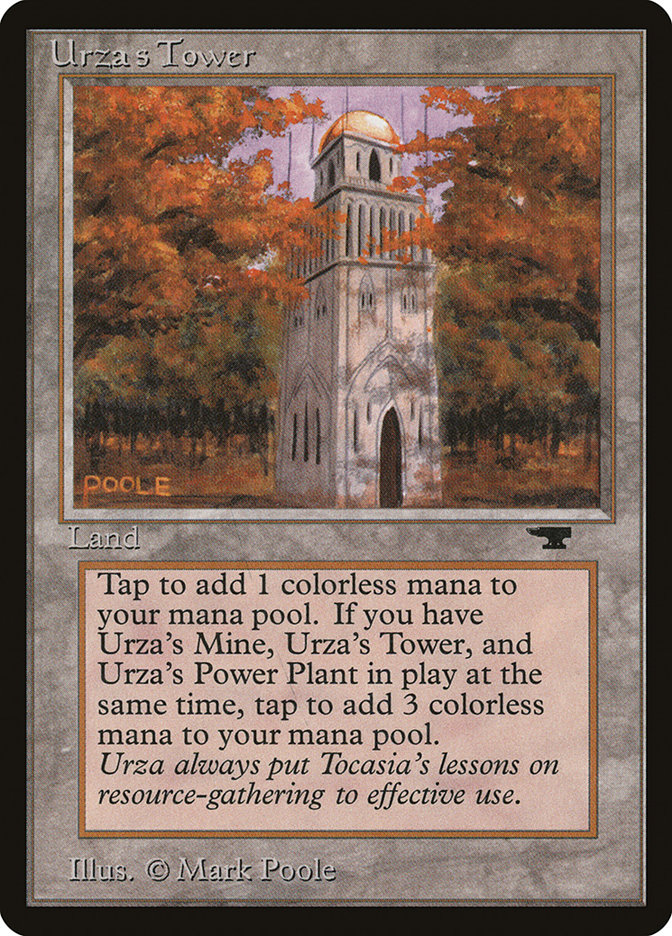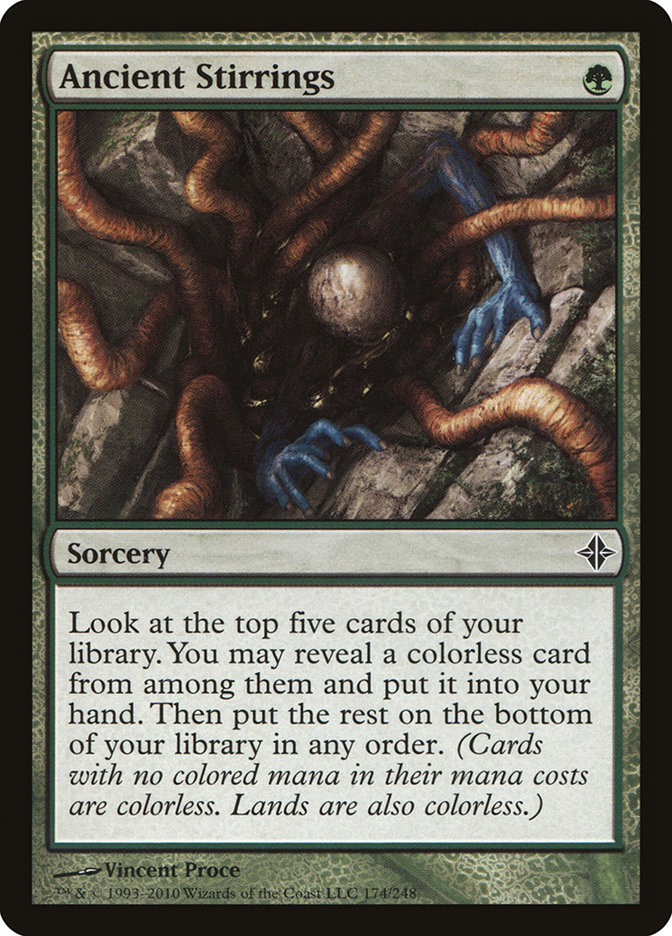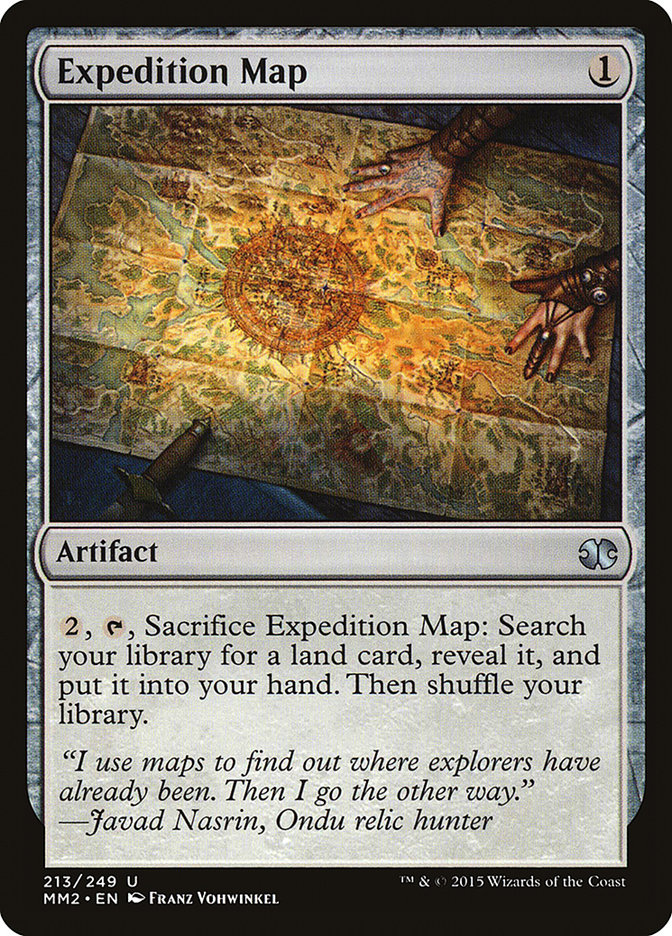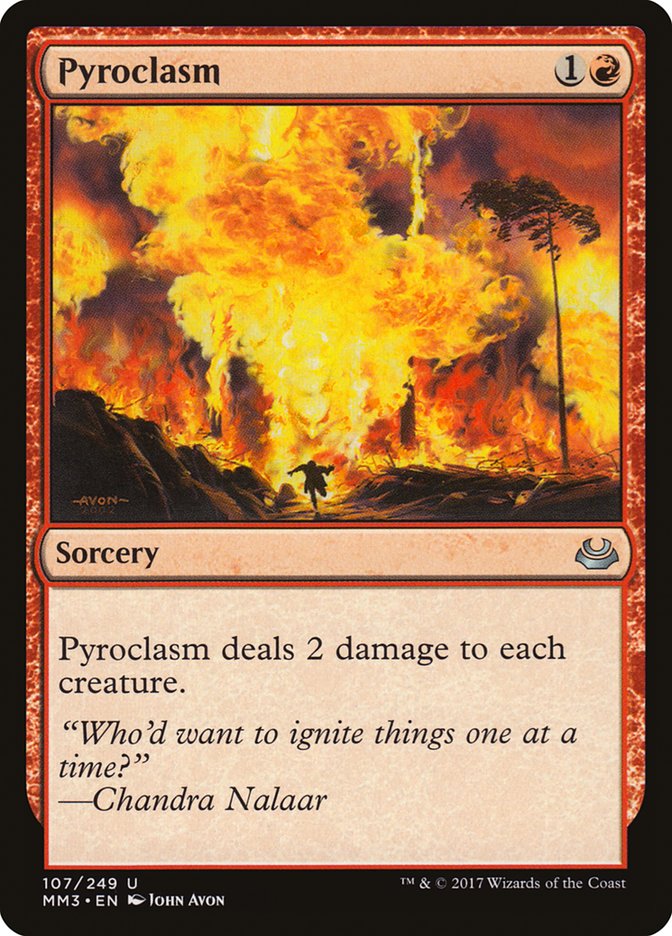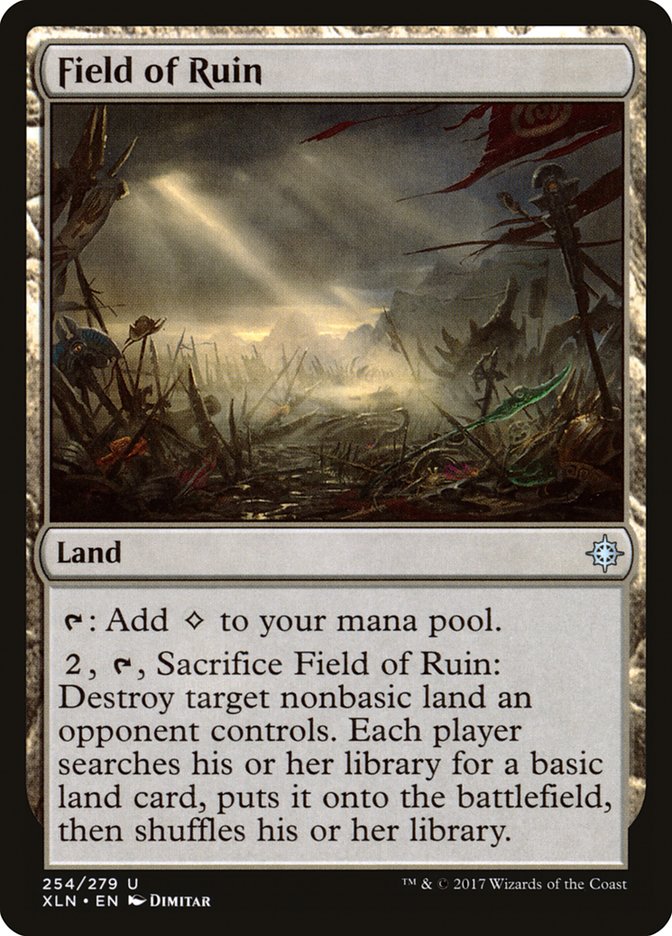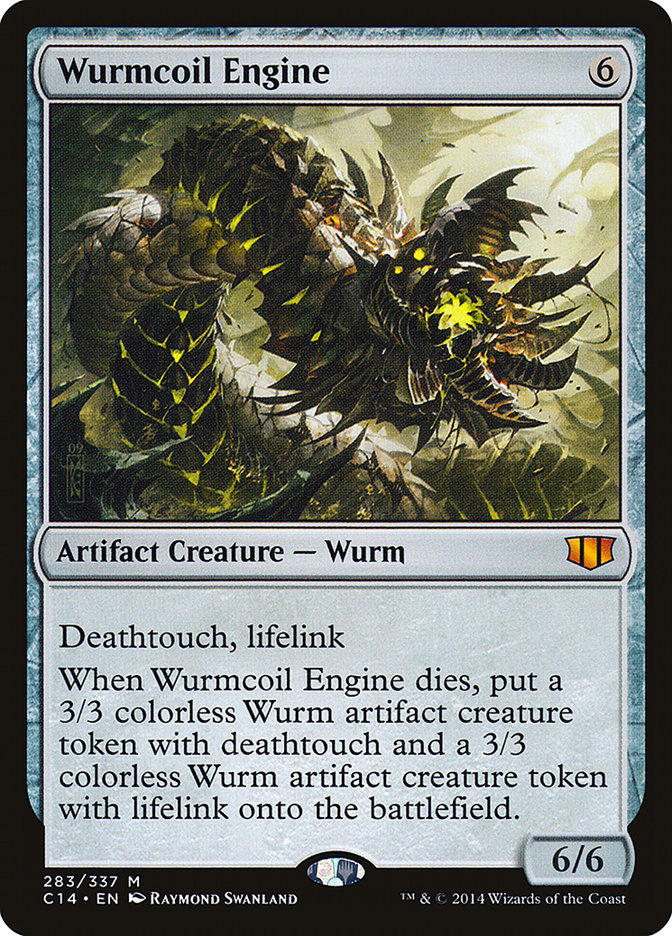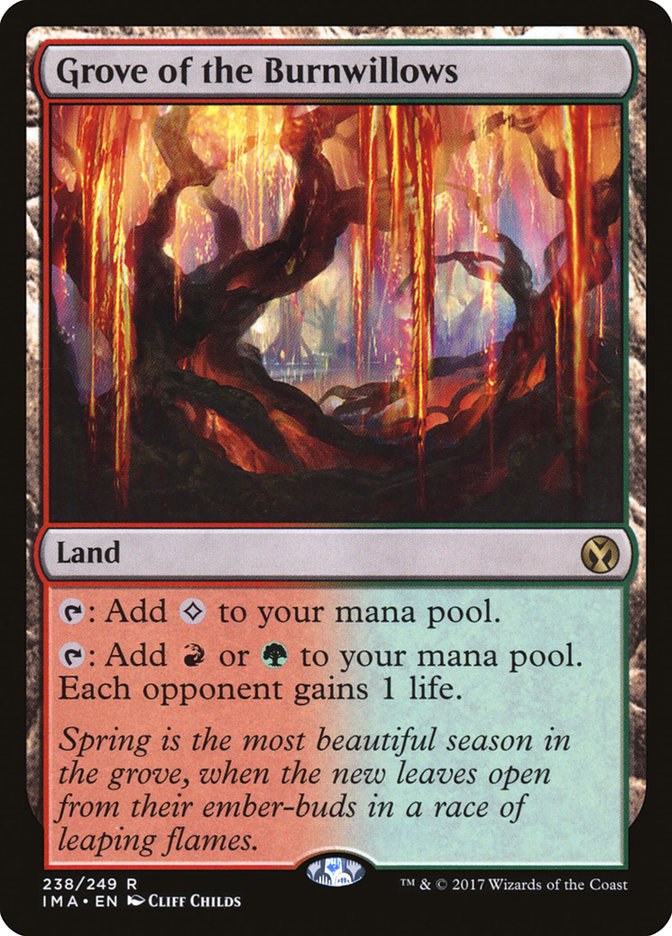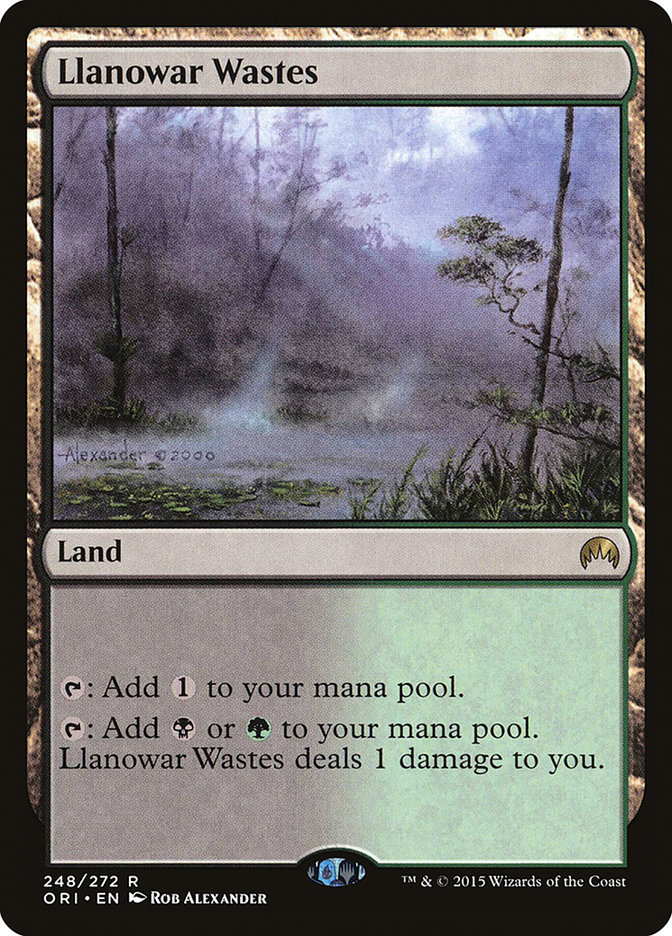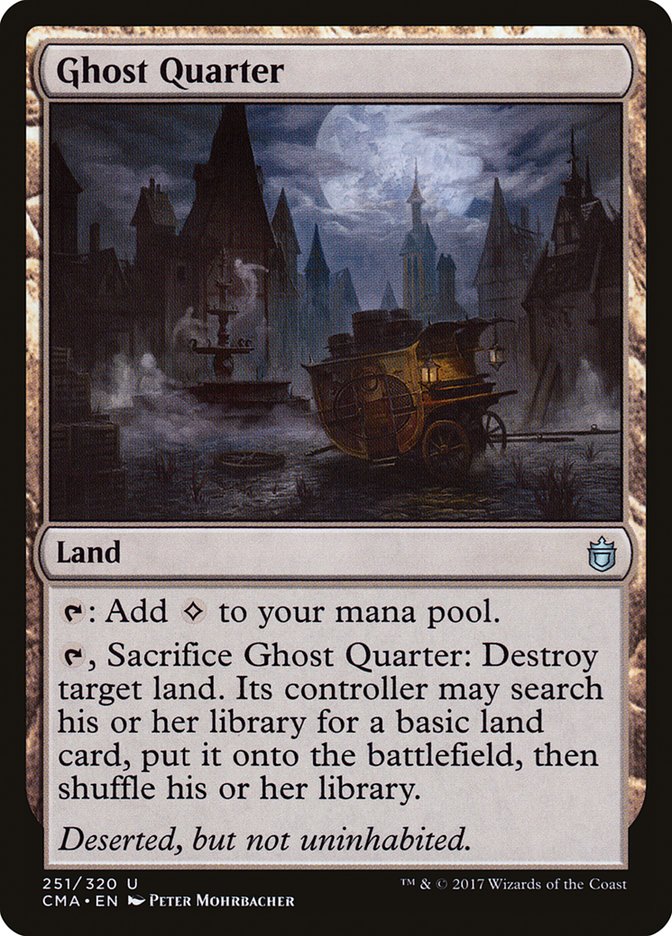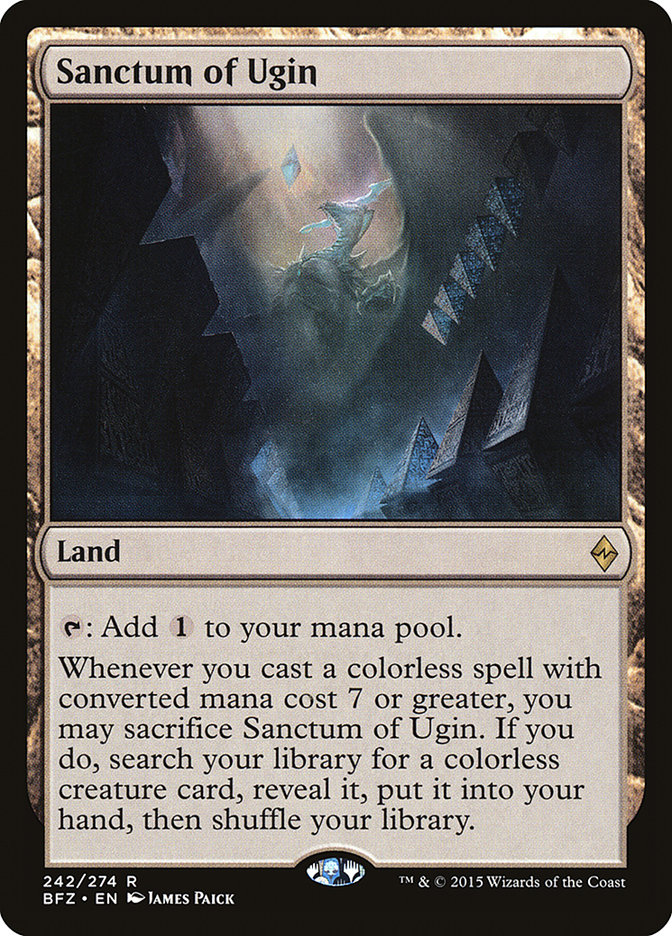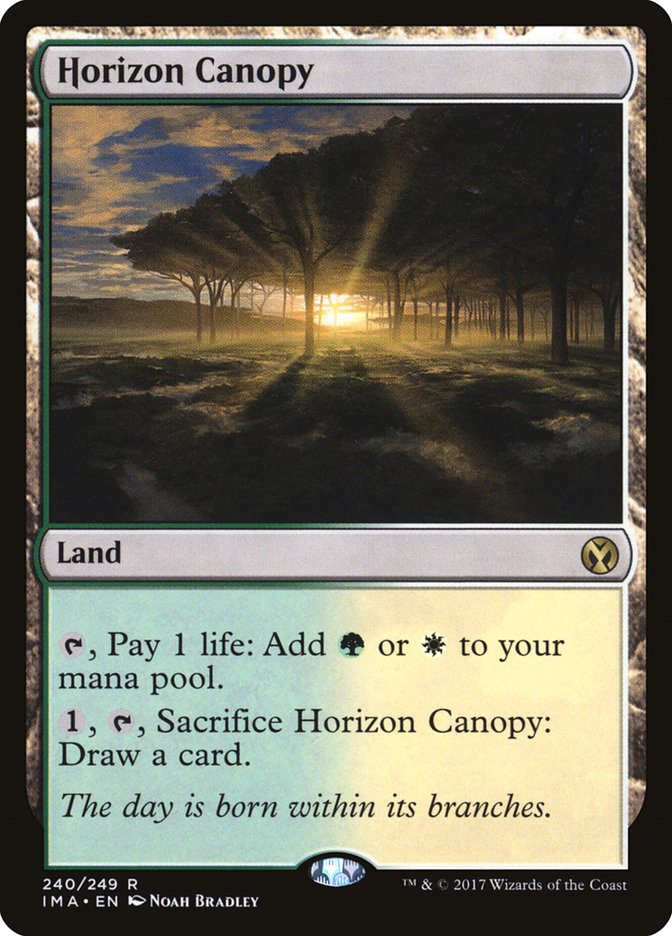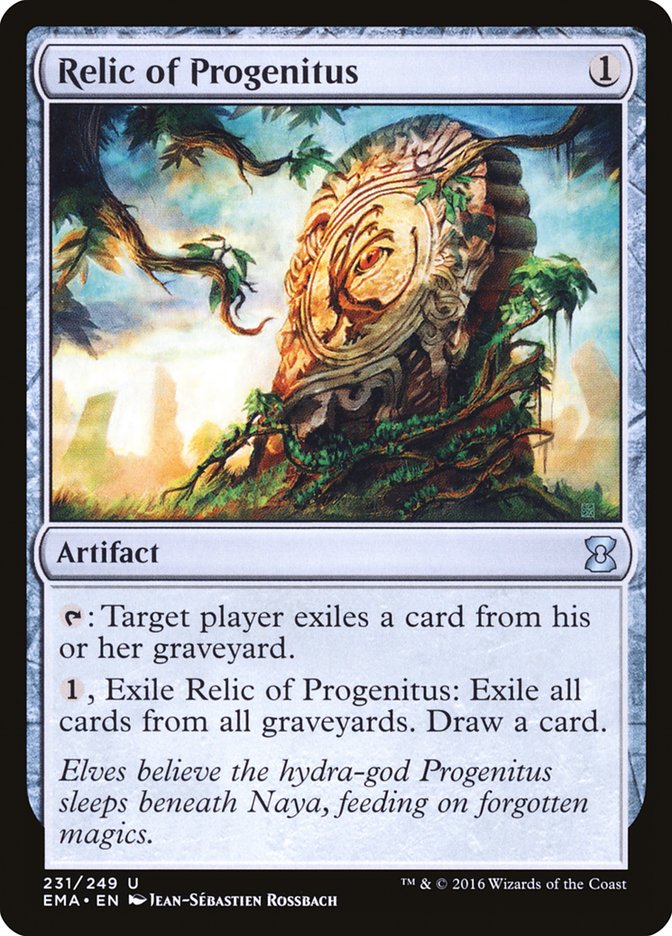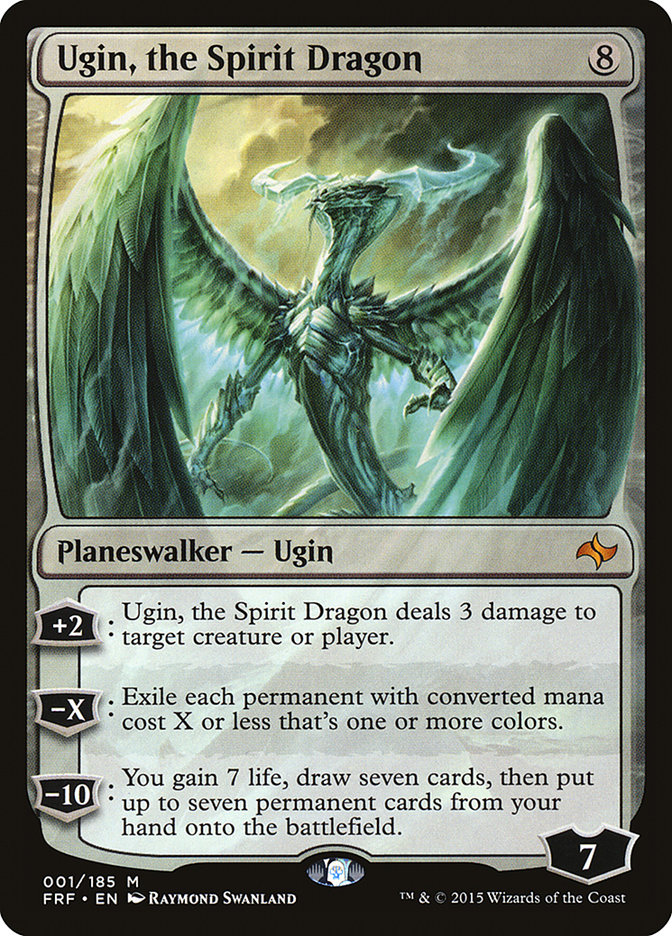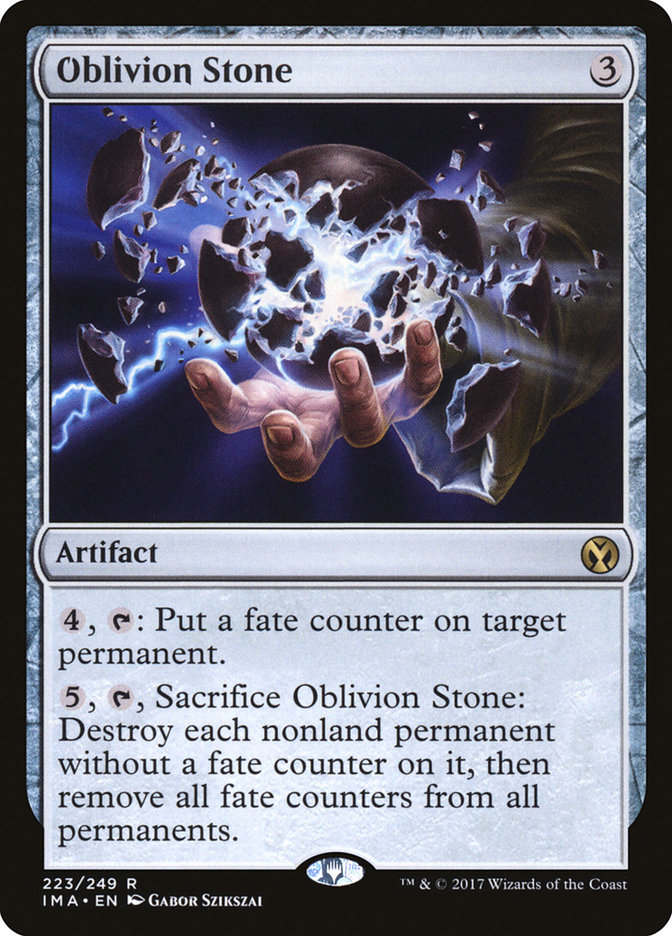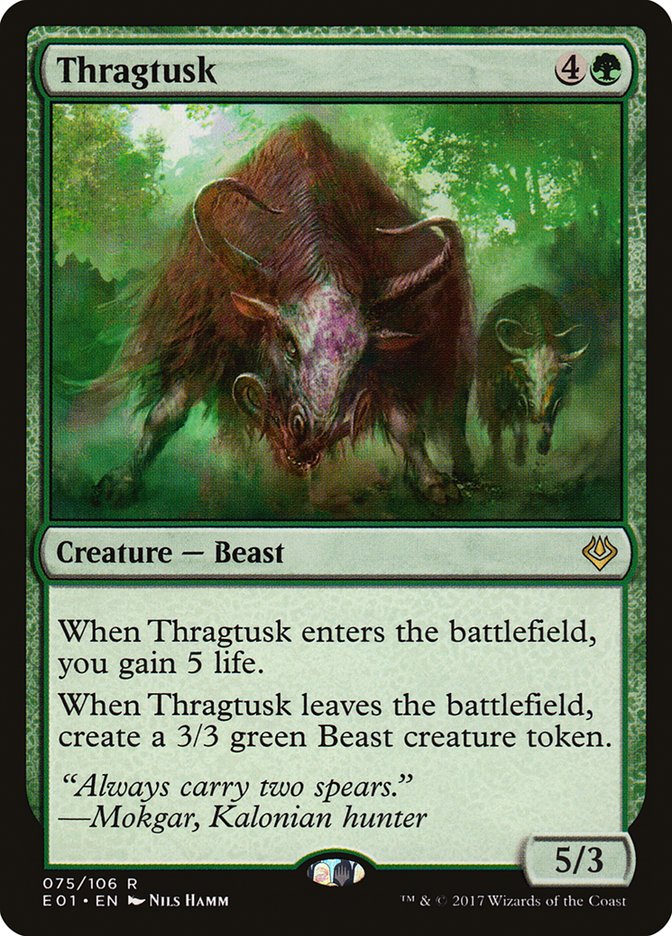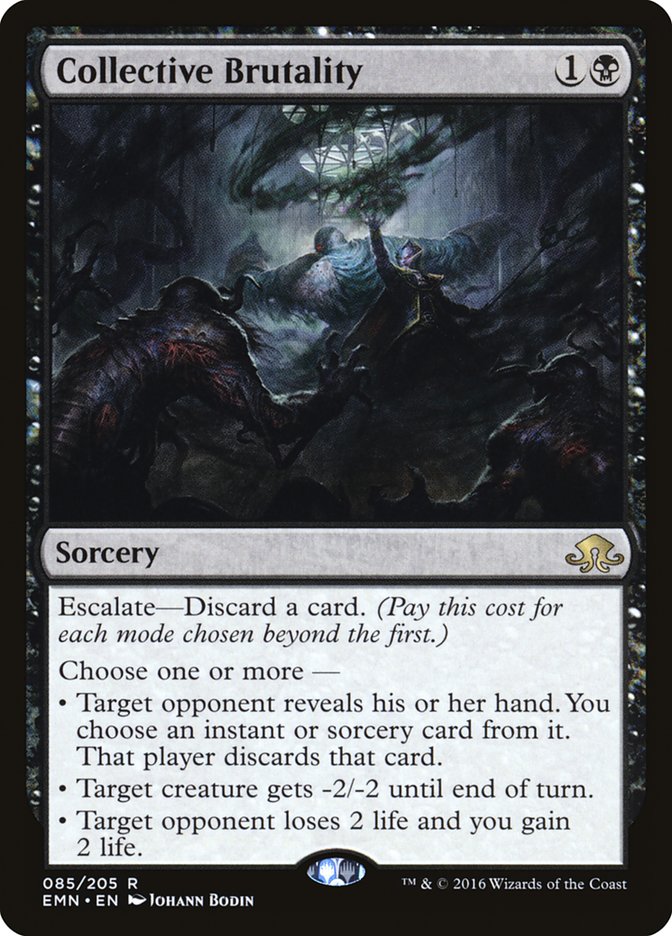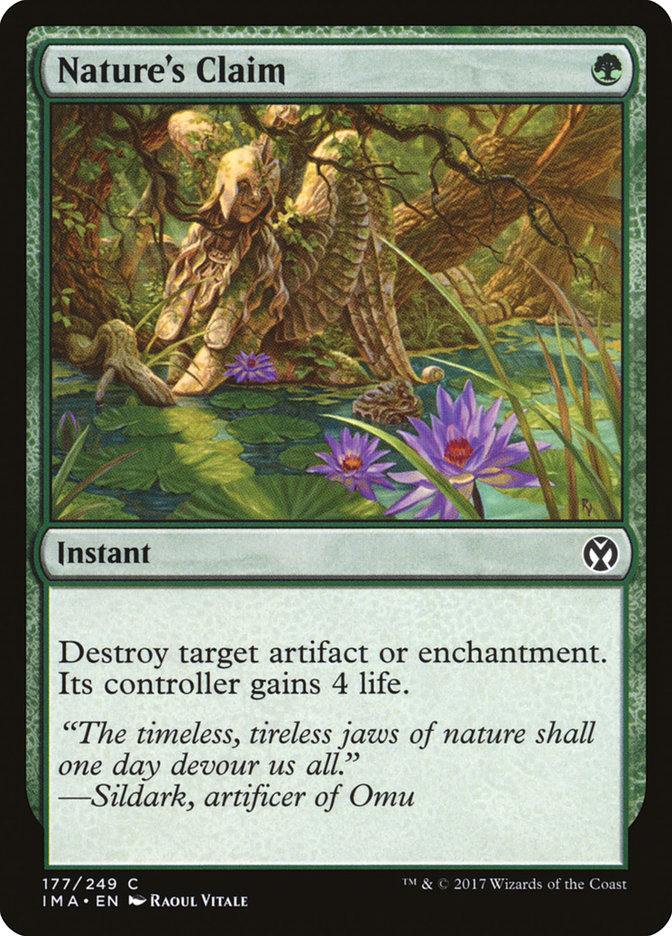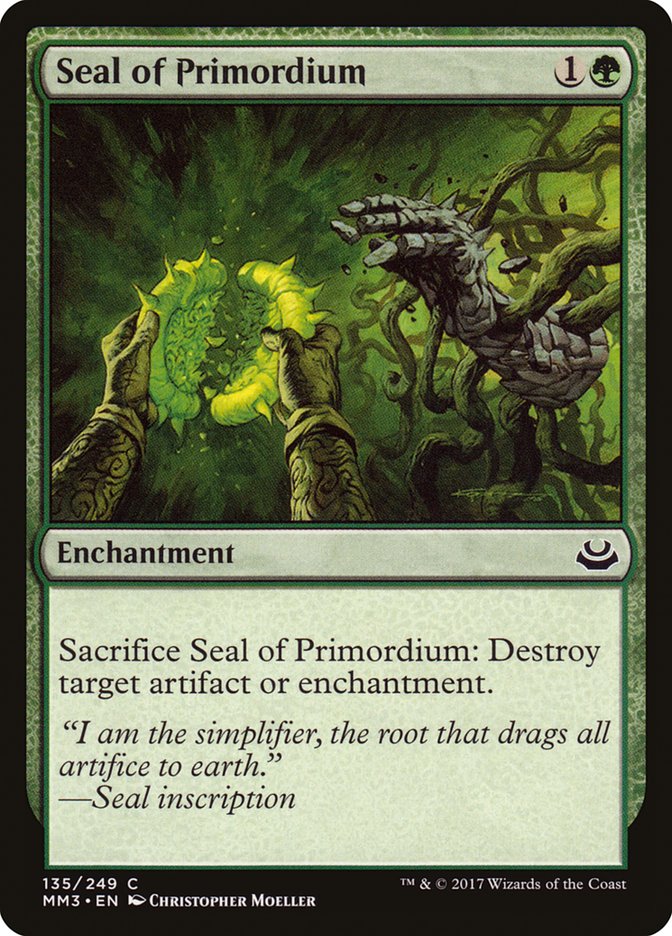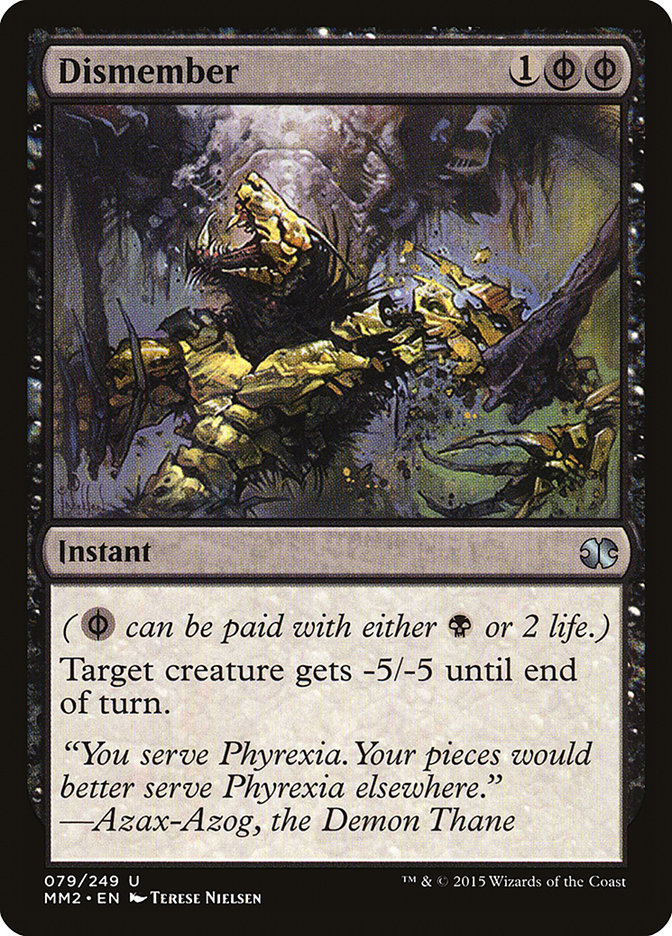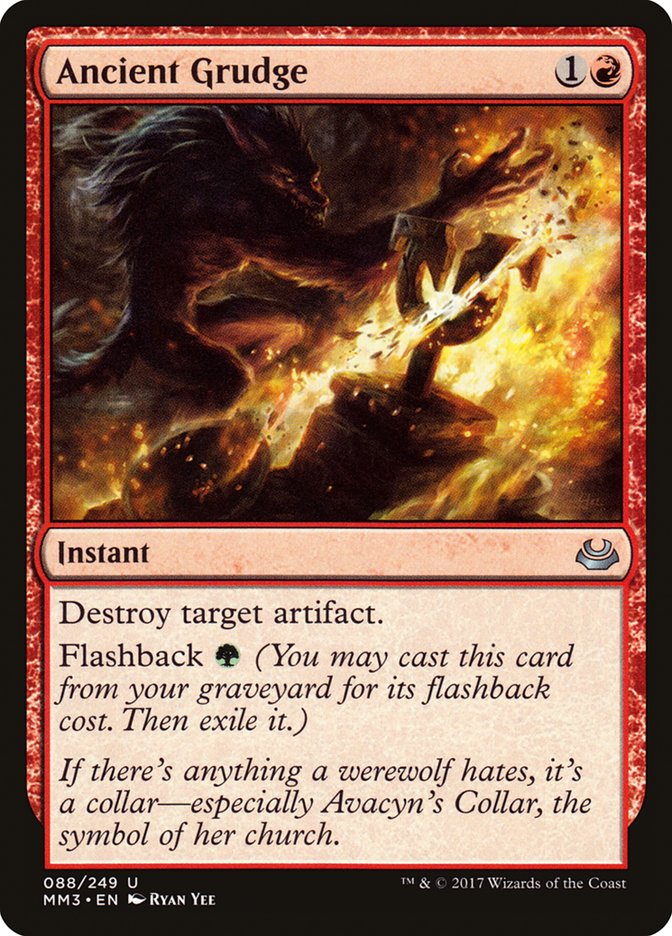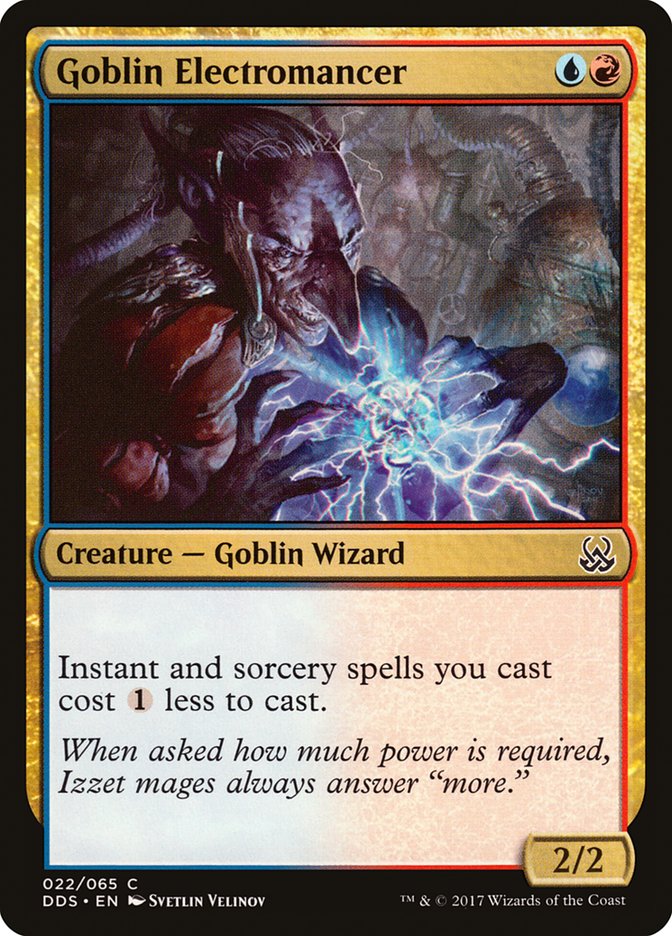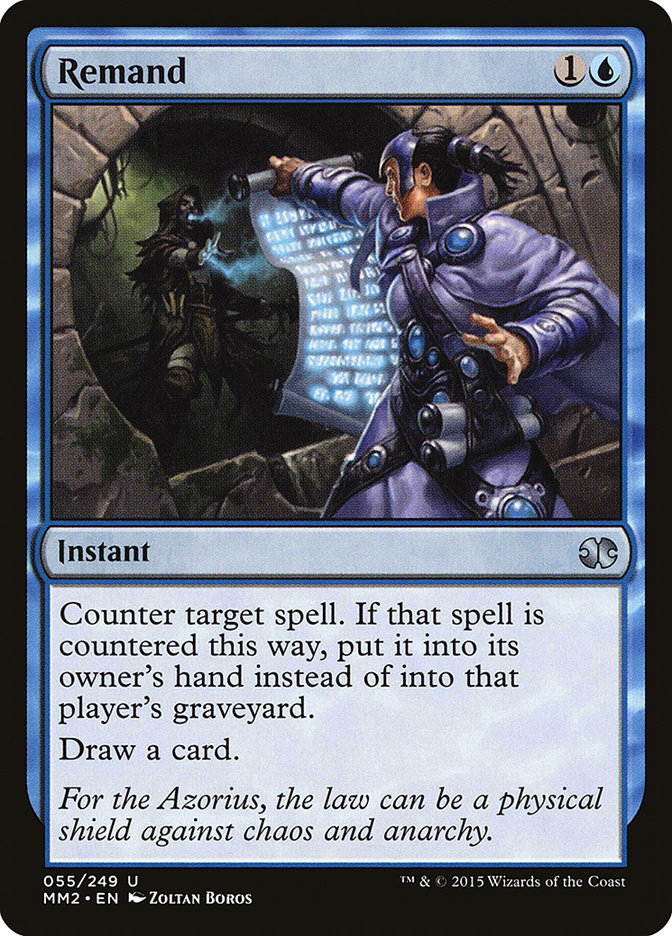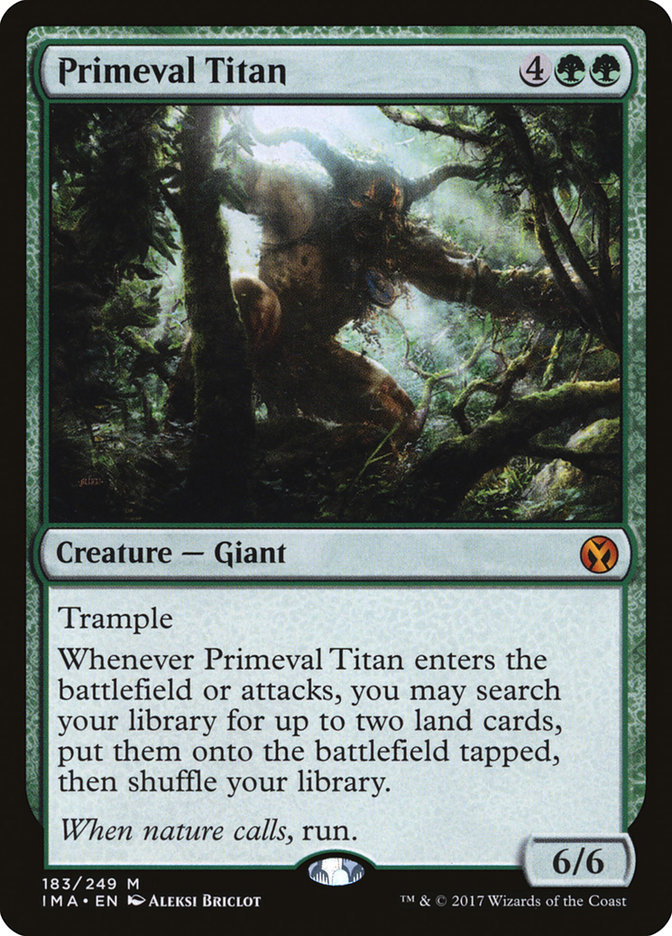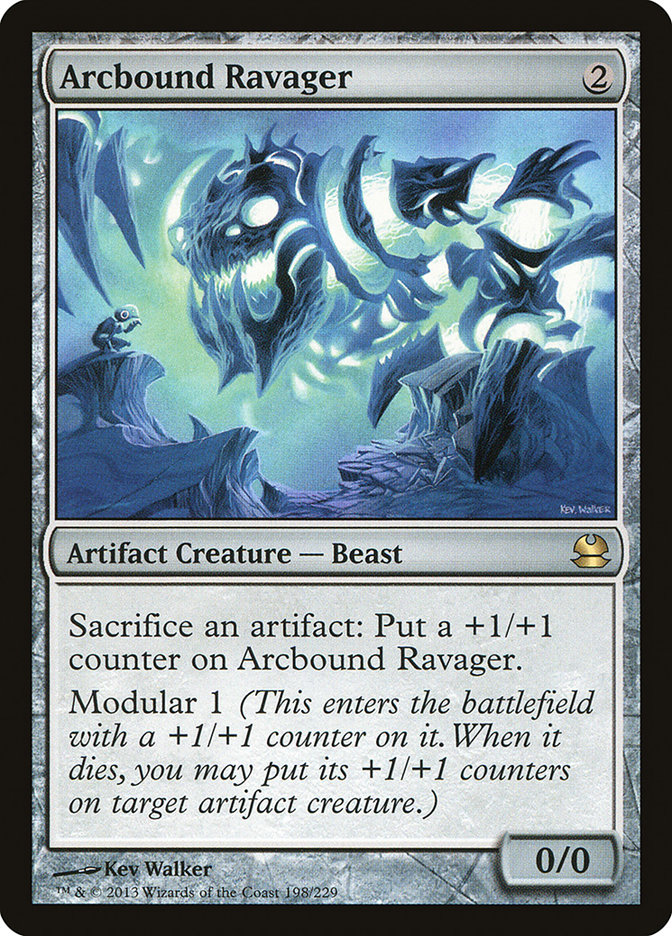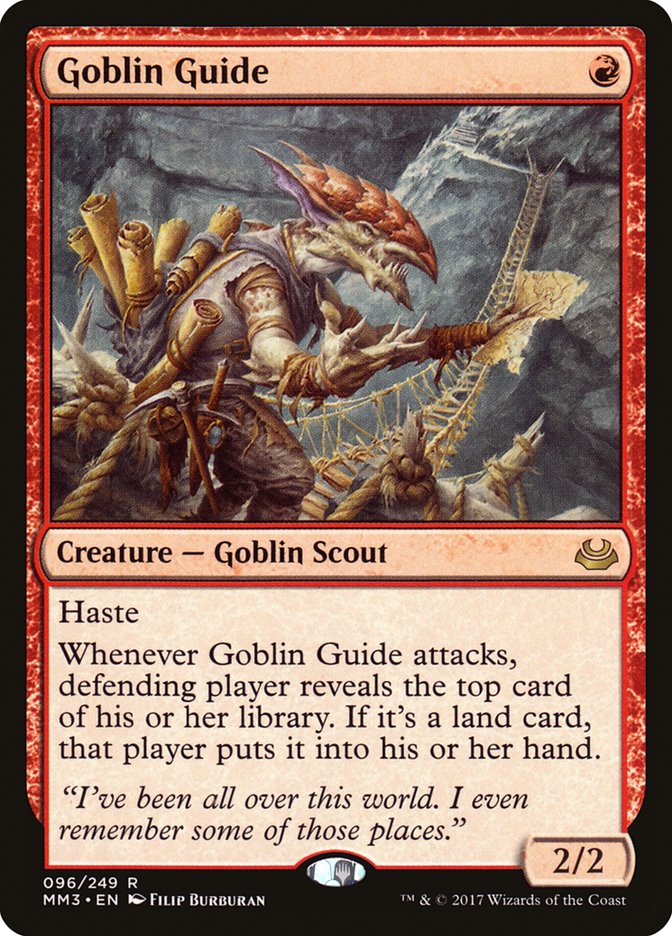After trying basically everything for Pro Tour Rivals of Ixalan, I
ended up deciding late on Tron despite Cedric’s claims the deck “lost to
everything” and was “totally unplayable.” My finish was only okay, but I’m
still happy with the deck I chose. Tron is one of the extremely powerful
options in Modern, and it seems like a very viable choice moving forward.
Why Tron?
Tron kinda falls into the broad category of proactive broken Modern decks,
but isn’t actually distinctly faster or slower than the other options there
like Affinity or Storm. Just like those decks, you have turn 3 nut draws
that basically nothing can beat, allowing you to steal games. So why Tron
over those?
Lands are really hard to interact with. A lot of the generic stuff people
fill their decks with to stop opposing permanents just doesn’t work. Beyond
that, Tron is full of stuff like planeswalkers, Wurmcoil Engine, cast
triggers off World Breaker and Ulamog, the Ceaseless Hunger that just
aren’t things people interact with.
One of the biggest draws to Tron is that it is relatively resistant to
mulligans. You don’t need a lot of physical cardboard to win, just three
lands and a single spell. Plenty of your five-card hands are basically the
same as your best seven-card hands, whereas something like Affinity often
struggles off lower hand sizes. I’ve even gone as far as three cards with
Tron and won a game, though admittedly that was against basically the best
possible matchup for the deck in Jeskai Control.
New Developments
Let’s kick this off with a little bit of Todd Stevens. First, the Tron deck
he played at the SCG Tour Dallas Modern Classic.
Creatures (9)
- 3 Wurmcoil Engine
- 2 Ulamog, the Ceaseless Hunger
- 1 World Breaker
- 1 Emrakul, the Promised End
- 2 Walking Ballista
Planeswalkers (6)
Lands (14)
Spells (31)

Where’s all the interactive spells?
Here’s even more Todd Stevens to explain it for you.
Creatures (14)
Planeswalkers (4)
Lands (23)
Spells (19)

While the big news out of Ixalan for Modern was the immediate
success of Humans on the back of Kitesail Freebooter and Unclaimed
Territory, a different non-basic land has honestly had a much more
widespread effect on deck construction in the format. Field of Ruin is
extremely powerful in a format where the midrange and control decks are
constantly looking for solutions to powerful lands like Urza’s Tower,
Celestial Colonnade, Academy Ruins, or even just shorting their opponents
on a crucial shockland-against stretched manabases like Four-Color Death’s
Shadow. Despite the headline deck on the SCG Tour being Ben Nikolich’s
Jeskai Control deck
, my attention was on the two-color U/W variants that are half-control,
half-land destruction.
As a deck really relying on assembling specific non-basic lands, Tron
needed to adapt. Fortunately, as years of bad Blood Moon hands have shown
us, you are still technically capable of casting your big spells without
actually assembling full Tron. The Tron deck might only have nineteen
physical lands, but it also has eight direct ways to find lands in Sylvan
Scrying and Expedition Map, another four Ancient Stirrings that usually
find lands, and twelve cantrips to filter through all of this to make about
two-thirds of your cards into land drops.
The key is just never letting your opponent use Field of Ruin as a Strip
Mine, only as a Ghost Quarter. All of the extra basic lands ensure you can
always find a replacement off Field of Ruin and eventually just cast Karn
Liberated the hard way.
The flip side of this is that you need to cut your non-basic green sources
to do this, and with that goes your second color. In pre-sideboard games I
found the Fatal Push style cards to be unexciting and honestly detrimental
against such a wide field, but I really did miss them come game two. The
colorless alternatives to removal and disruption just aren’t the same.
Spatial Contortion just isn’t an acceptable Magic card, and Thought-Knot
Seer is just clunky and weird compared to Thoughtseize.
The trick I came up with literally the night before the Pro Tour was only
playing four basics, one Llanowar Wastes, and then spending two sideboard
slots to switch over to black mana. This also allowed me to sideboard up a
land in the matchups I expected to naturally need to cast Wurmcoil Engine,
turn Ghost Quarter into a useful green land in spots where it has no good
targets, like Humans or Burn, and it generally doesn’t cost much as you
really can’t bring in that many colored cards in any given spot. I think I
ended up cutting a Grafdigger’s Cage and a second Seal of Primordium,
neither of which I really missed.
Also, Yuuya Watanabe did almost the exact same thing, so that makes me feel
really smart and probably makes it right.
List Specfics
I played the following deck at Pro Tour Rivals of Ixalan.
Creatures (8)
Planeswalkers (6)
Lands (15)
Spells (31)


A large portion of the deck is basically locked in. The Chromatic cyclers
with green search package is the most reliable way to assemble turn 3 Tron
that we have seen, and if you are doing that it’s because you assume Karn
Liberated is really good (it really is).
In practice, I found four to be the number of Forests I wanted to defeat
most pre-sideboard Field of Ruin shenanigans. Three leaves you open to
spots where they draw multiple Field of Ruins and you draw basic Forests,
especially in drawn out games against U/W where you might need to naturally
cast an Ulamog, but it’s certainly close to the margin. That left room for
one black source in the maindeck, and the reliable untapped Llanowar Wastes
was an easy pick over the “I can’t use Oblivion Stone on turn 4″ Blooming
Marsh. In sideboarded games where you often need an early interactive spell
to slow down Burn or Counters Company, the painless Blooming Marsh is a
much more important resource. Yuuya played an Overgrown Tomb, which I
haven’t tried, but I think it is within reason to try that.
Ghost Quarter is super important right now. It is one of the ways you can
steal mirror matches from subpar spots, but just as important is that it
clears up creature-lands your Oblivion Stones can’t.
Sanctum of Ugin isn’t a perfect value land, but it does ensure you have
multiple threats to power through counter magic, or ensure a specific
answer to follow up your Karn Liberated.
Some of the lists I’ve seen play one Horizon Canopy to turn a Sylvan
Scrying into a cantrip later in a game, but given the real constraints on
your lands between basics and splash sources I’m unsure spending the deck
slot on it is worth it.
On the subject of Sanctum of Ugin, Walking Ballista is a huge addition that
made that card significantly better. You can’t always cast Ulamog, the
Ceasless Hunger, or two permanents might just not be enough. Walking
Ballista is both the perfect interactive card to find after a Karn against
aggro to ensure you clean things up and a card that can trigger Sanctum of
Ugin to find a bigger threat if you cast it for X = 4.
With the removal of Fatal Pushes from the maindeck Walking Ballista also
plays a key role as an interactive card you can cast without Tron. The one
damage ping is notable against Inkmoth Nexus and Steel Overseer out of
Affinity, so even for twice the mana, a robot Mogg Fanatic puts in some
good work.
On the flip side of your tutor targets, you have ways to take your opponent
off lands or other non-creature permanents like Pithing Needle. World
Breaker at seven mana can matter in spots to follow up Karn Liberated and
is just generally better to draw, while Ulamog, the Ceaseless Hunger is
just the end game breaker. Sadly most of the decks you want to chip away at
with World Breaker are loaded up on Path to Exiles making the recursion
irrelevant, which is also why the second Ulamog, the Ceaseless Hunger is
necessary despite being really bad in your cast-spells-naturally games.
Many online lists are playing Emrakul, the Promised End. No one has shown
me a good reason why. All the decks I want to cast it against are too fast,
die horribly to Ulamog anyways, or don’t let me cast ten-drops due to
actual land destruction.
Wurmcoil Engine is a weird one. It’s absolutely insane and necessary in
some spots, basically blank in others. I’m not committed to three being the
right number and could see any number between zero and four being right.
Just judge your metagame appropriately.
Relic of Progenitus is way better than it looks. Shutting off Snapcaster
Mage is very important for eventually resolving some big spell,
aggressively stopping Gurmag Angler and Tarmogoyf really narrows many
deck’s angles of attack, and free wins against Dredge and B/R Hollow One
recursion draws are great. It can be sideboarded out when it isn’t
effective, but it is never truly dead. One important note is that Relic of
Progenitus is often crucial in sideboarded games to exile your own
destroyed Tron lands to stop Surgical Extraction.
Sideboarding
I don’t have a dedicated sideboard guide for Tron as so much of it is
reactive to your opponent’s game plan. Instead, here are some guidelines.
If you expect your opponent to disrupt your mana, you can shave Ugin, the
Spirit Dragon, as eight is a lot. This also counts if they are on Eldrazi
or artifacts and it doesn’t exile stuff, though three damage a turn is
still technically a threat to Lantern Control.
Similarly, if your opponent is attacking your mana and isn’t U/W where the
game takes so long you get there anyways, Ulamog isn’t great. The first
copy can easily go, and the second can definitely follow.
If they don’t have the types of permanents your cards answer in their deck,
sideboard those cards out.
If having a random attacker with lifelink doesn’t matter because you are
just going to die anyways, Wurmcoil Engine can be cut down. One spot this
is oddly true is Affinity, where often you are dying to Infect or too much
flying damage to matter. Having Wurmcoil Engine there is sometimes fine,
but taking one out is also fine.
Be sure not to take out too many threats across all the categories. I don’t
quite know what number that is, but you do need to be able to actually kill
your opponent with all of your mana.
Oblivion Stone obviously has matchups it doesn’t do anything, but be aware
it is your only instant speed answer to cards like Secure the Wastes.
Similarly Relic of Progenitus does nothing against non-graveyard decks that
aren’t trying to Surgical Extraction you.
These are clumped together because of Stony Silence. I don’t think you can
ever cut Expedition Maps and Chromatics, especially when you have colored
spells to sideboard in, but you can cut your other artifacts that are bad
against Stony Silence to minimize your exposure to it. Walking Ballista is
also on the fringe of this category. I never cut cards that are actively
good in the matchup, but given the choice of an Oblivion Stone or an Ugin,
the Spirit Dragon against U/W Control I might bias towards the later to
avoid the old four-for-one Stony Silence nightmare.
On the draw against creature decks that produce more than one relevant
threat, you can shave a Karn Liberated. This does not include Affinity
where Karn exiles their one Inkmoth Nexus or Cranial Plating. On the play
Karn is just the greatest thing possible always.
Thragtusk is for matchups where gaining five life is a big deal, a 5/3
blocker is a big deal, or just a two-for-one threat is a big deal. Don’t
just shove it into your deck because it looks kinda okay to gain some life.
Again, the rule is when in doubt sideboard a bit less. Thoughtseize is just
for combo and control. Occasionally I’ll sideboard Thoughtseize in on the
draw if there is a specific early play I need to stop, like Devoted Druid
when their deck is largely creatures.
Collective Brutality is almost exclusively for Burn. Be aware that while
the card is generically good against Collected Company, a lot of the
Collected Company decks are more Spell Queller and Knight of the Reliquary
than they are x/2 creatures this actually kills.
Fatal Push is fairly obvious, but be aware that it almost always has revolt
active due to your Chromatic Stars and Expedition Maps.
The Naturalize effects might be the only things you want more than you
think you do. This isn’t just for the Nature’s Claim gain four life against
Burn, but to cover Stony Silence or Blood Moon and pick off Tidehollow
Scullers.
Adjustments and When to Bail
Red is certainly a debatable splash over black. Pyroclasm is a very good
card against Affinity and various tribal decks, and Kozilek’s Return might
also be great. I would have done better at the Pro Tour with red, but you
can’t really expect to face down Zombies and Merfolk. Pyroclasm is also
very important against the Young Pyromancer + Blood Moon strategies,
allowing you to clear their fast clock and survive to Wurmcoil Engine. The
same applies to Geist of Saint Traft.
If you ditch Fatal Push, you have to start looking at worse spot removal
spells. Dismember is specifically good against Death’s Shadow but leaves
you vulnerable to more aggressive creatures, while Lightning Bolt is the
reverse of being great against Burn and Humans but blank against 13/13
Avatars and 5/5 Fish Zombies.
Ancient Grudge isn’t actually a reason to play red. The cheaper, less
splash color intensive, more enchantment destroying green options are just
better against the field and you crush Lantern Control anyways.
The reason to not play Tron at a given time largely has to do with not
running it into specific combo decks. Storm isn’t a great matchup,
Scapeshift isn’t a great matchup, and the various Remand combo U/R decks
like Kiki Moon and U/R Breach aren’t good matchups. If any of those three
is very popular, I would not try to Tron people.
The follow up to those combo decks can be brutal as well. Surgical
Extraction is merely okay against Dredge, but against combo decks it’s a
very effective card that also plays double duty against Dredge. Fulminator
Mage or Tectonic Edge plus Surgical Extraction is a very effective plan
against Tron when people want to come prepared for your deck. If you start
seeing that pop up, that might be a sign to look elsewhere.
Neither Burn or Affinity is a great matchup, though both are winnable. I
can’t describe the exact window you should try to avoid here as often the
reaction to these two decks is the Jeskai stuff that Tron destroys, but
when these decks start to rise it isn’t the best time to play Tron even if
you are still capable of winning matches.
That may sound like a lot, but given a field as wide as Modern is, these
are fairly specific conditions. Tron is just kinda great, it has been for
large parts of the last six years, and it probably will still be for some
time to come.

